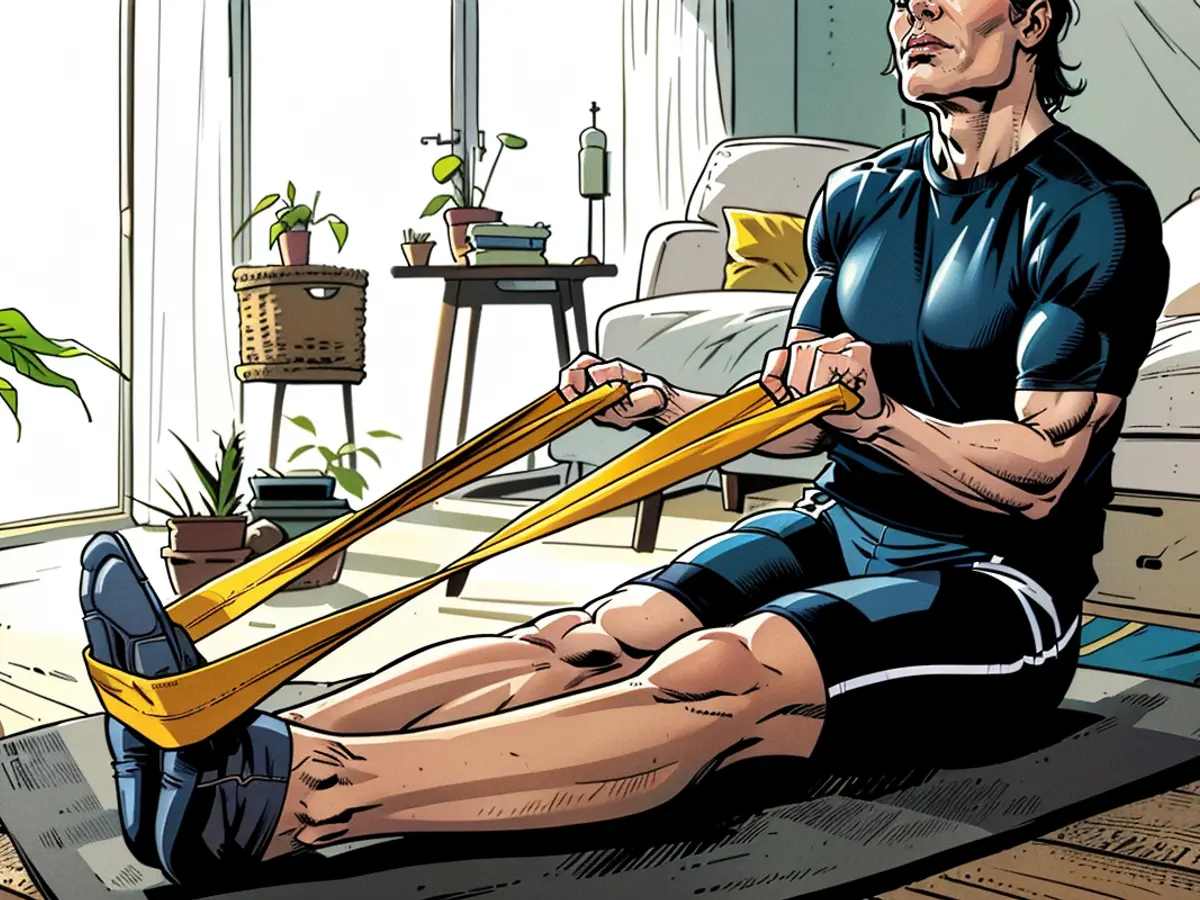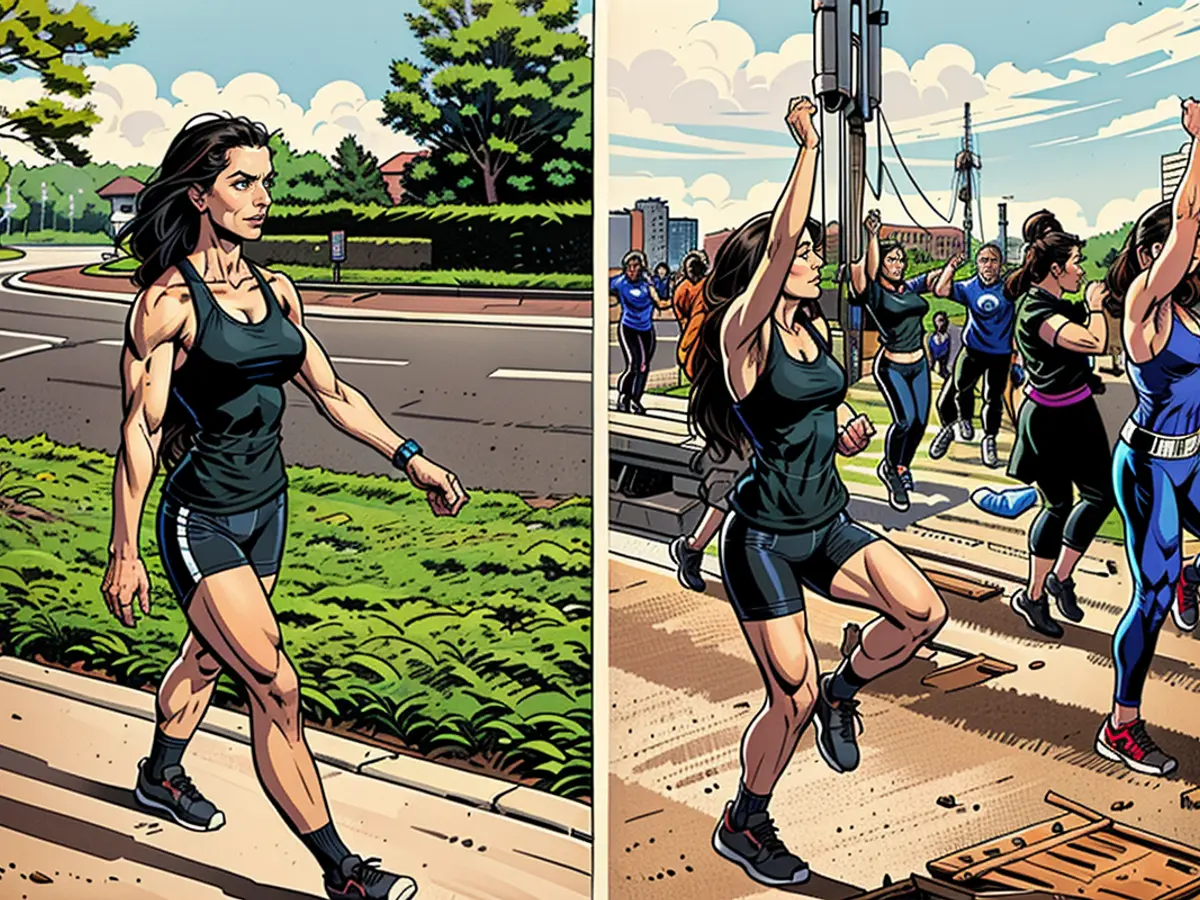No-jump HIIT workouts are a great option for many
During a HIIT workout, you pair short bursts of intense work — generally lasting between 15 seconds and four minutes — with quick recovery periods. These cycles are repeated over a set period of time.
The workouts are popular because they are quite beneficial. You can burn a lot of calories in a short period of time during a HIIT workout, which is great for time-pressed individuals. They also build muscle mass, are better at enhancing sports performance than moderate-intensity, continuous exercise, and are more enjoyable than other exercise regimens, studies have shown.
A HIIT workout also has a positive effect on your executive function, or cognition, according to a July 2021 review of 24 studies published in the International Journal of Environmental Research and Public Health. Increased cognitive function due to HIIT workouts was even seen in young adults, a February 2020 study showed, which researchers said indicated HIIT workouts may be both an efficient and effective way of combating cognitive decline as people age.
Despite all these benefits and HIIT’s popularity, some people are wary of trying these workouts since they often involve various forms of jumping. Popular HIIT moves include jumping jacks, box jumps, burpees, tucks and mountain climbers.
If you’ve got a bum knee, poor balance or are recovering from an injury, it makes sense to be leery of jumping. But there is good news — you can do a wide variety of HIIT workouts without a single jump and still get your heart racing.
How to up the intensity without jumping
“High-impact activities like jumping are often confused with high-intensity ones,” said Jonathan Tylicki, a certified personal trainer based in Irvine, California. “But high-intensity workouts can be low-impact, where you’re not jumping but still get the same benefits as a high-impact, high-intensity workout.”
High-intensity workouts use multiple muscle groups at the same time and elevate your heart rate to more than 70% of its maximum. You can calculate your maximum heart rate by subtracting your age from 220, then calculating 70% of that number to know how fast your heart should be beating.
For example, a 45-year-old’s maximum heart rate would be 220 minus 45, or 175 beats per minute. Seventy percent of 175 is 122.5, so your heart rate should rise above 122.5 beats per minute during the high-intensity portions of your HIIT workout. More simply, during a high-intensity exercise cycle, you should only be able to say a few words at a time because you’re huffing and puffing so much.
So how do you get your heart racing without jumping around? One way is through speed.
“If you’re doing squats, do them as fast as you can,” said Pete McCall, a certified personal trainer based in Encinitas, California, and host of the “All About Fitness” podcast. “You don’t have to jump at the end.” Good form, of course, is important.
“You’re looking for the rapid lengthening and shortening of muscle tissues, which is one of the benefits of jumping,” McCall said. “But you can get almost the same benefit by standing in place and doing as many squats as you can in 20 seconds.”
Another way to up the intensity of an exercise is to use resistance bands or weights. So toss a medicine ball, Tylicki said, or use resistance bands to create extra tension against your muscle tissues. One example: Tie a band to a doorknob of a shut door, then pull or row it as quickly as you can.

The traditional shoulder press is a favorite of Tylicki’s for upping the intensity of a workout. He instructs his clients to use heavier weights than they normally do or use lighter weights paired with faster speed.
“I love showing clients how their heart rate increases while doing shoulder presses,” Tylicki said. “It always takes them by surprise.”
Rowing machines are also a great choice for a high-intensity, low-impact workout, McCall said. “So much of your body is in motion at one time, you use more muscle mass,” he said. “But there’s no impact from the ground. I have bad arthritis in my right knee, and the rowing machine is my go-to. They’re one of the best-kept secrets.”
But consider some easier jumping, too
If you don’t have a limiting injury or issue, both trainers who spoke with CNN said you should consider trying some form of jumping during your workouts, at least occasionally.
“There are benefits from including impact in training,” Tylicki said. “It’s one of the best ways to improve bone mineral density, for example, which is important for women who are prone to osteoporosis or osteopenia.”
The key is to start slowly and easily. Try jumping jacks or jumping rope, which have less impact than, say, box jumps. If you want to try box jumps, start with a short box and jump up, then step down, McCall said.
“Anybody can jump, but landing correctly is the issue,” McCall said. “If you’re jumping up and down off a box, you’ll risk falling when you’re jumping back down. I’m a big fan of jumping, but not repeated jumps in place.”
No matter whether you occasionally jump during a HIIT workout or always go jump-free, it’s important to limit HIIT sessions to two or three times per week, with at least one rest day in between, as they are intense sessions. Also, remember that the older you are, the longer it takes your body to recover.
But don’t let that stop you from incorporating HIIT workouts into your weekly routine since they offer so many benefits, especially for older adults.
“They really reduce the risk of diabetes as you age and combat cognitive decline,” McCall said. “The biggest benefit we’re seeing now with HIIT workouts is the brain.”
Melanie Radzicki McManus is a freelance writer who specializes in hiking, travel and fitness.
Engaging in regular HIIT workouts can greatly contribute to your overall wellness and health. The high-intensity nature of these workouts, as shown in studies, can boost your cardiovascular health and improve your executive function, contributing to better cognition.
After a HIIT session, it's typical to feel breathless, indicating that your heart rate has significantly increased. This increase in heart rate is a sign that you're engaging in high-intensity exercise, contributing to your cardiovascular health.








